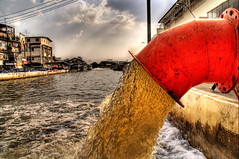You are here
Articles

India’s new policy on biofuels targets blending at least 20 percent biofuels in diesel and petrol by 2017. This implies that 13.38 million tons of biodiesel will be required (which would need 30x increase on plantation of non-...

Cow belches contain methane and have been a recognized source of greenhouse gases. With cattle in India estimated at 475 million, bovines may be contributing more to emissions than cars! Feed additives hold a key to solving this problem.
Carbon dioxide gets more press, but methane is also...

Some companies in the discipline of synthetic biology are working in hopes to capture large amounts of carbon from the atmosphere and either sequester them or convert them into fuels. Here we introduce the basics around this emerging field.
What is synthetic biology?
...

This second article in our IPR series, outlines the existing framework for compulsory licensing and how it may be in India's best interest to work within the existing TRIPS framework.
The vast majority of clean energy technology patents are held by residents of...

Beginning in 2010, India, as part of its five year plan, aims to factor the use of natural resources into its GDP as a means of underscoring its actions in the fight against global warming. And by 2015 the aim is to report on "Green GDP" figures.
...

Irrespective of the outcome at the COP15, low-carbon technologies are going to proliferate. This is the first article of an IPR series that will explore the multiple dimensions around existing treaties, tech-transfer and climate-relevant-IPR.
Indian Prime Minister Manmohan Singh...

Water is an integral part of the carbon cycle. The recent report from the Water Resources Group outlines water demand for India to reach 1.5 trillion cubic metres, though current water supplies are estimated to be just 740 billion cubic...

COP15 talks commence on Monday and the last few weeks has seen some re-posturing. Here is some how the key emitters line up as of today. It will be interesting to see how their positions change.
...

Two N2O abatement projects from Rashtriya Chemicals Fertilizers accounted for 1.35 million CER generation potential: being amongst the larger projects getting registered. Unexpectedly, a leading indicator for future projects is strong in November.
...
Talk about carbon and most people think of “energy carbon”: which is produced by burning fossil fuels such as oil, natural gas and coal. Most people, including policymakers and entreprenurs, seem to overlook “forest carbon”.
Forests have sequestered 4 centuries worth CO2 emissions...

Right on the heels of the Copenhagen climate summit, India has announced uniform pollution standard norms. The change in pollution standards comes after a long spell of 15 years.
“The new guidelines have been prepared after considering those of the European Union,” said Jairam...

Waste-to-energy (WTE) technologies represent an opportunity in India. The key is in working at the source to segment different waste-types.
 In urban areas municipalities are key to any solution...
In urban areas municipalities are key to any solution...

A number of countries wanted an amendment to the Montreal Protocol treaty to include the phase-down of HFCs: an alternate treaty to Kyoto/ Copenhagen to regulate some greenhouse gases. That did not happen.
The meeting in Egypt was expected to showcase the possibilities of a...

Widespread adoption of LEDs in place of CFLs is being given serious thought. Delhi's CM has even raised the issue of handling CFL disposal.
While the government and the manufacturers were busy popularizing the CFL, depicting it as an energy saving alternative to common bulbs, experts were...

Going by the World Energy Outlook report, India has a bleak period ahead. By 2030, world primary energy demand is set to shoot up 40% higher than in 2007, with India and China accounting for 53% of the additional demand....
